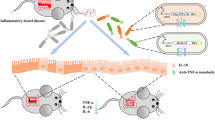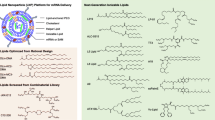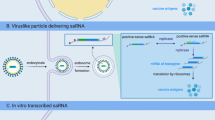Abstract
Bacterial superantigen staphylococcal enterotoxins (SEs) tremendously stimulate polyclonal T cells bearing particular TCR Vβ domains when binding to MHC II molecules, suggesting that they could be a candidate of new antitumor agent. SEC2, an important member of superantigen family, has been used in clinical trial as an immuntherapy agent for cancer treatment in China, and obtained some encouraging effects. However, the presence of immunosuppression and endotoxic activity limits the therapeutic dosage of SEC2, and influences its antitumor effect in clinic. Therefore, the enhancement of superantigen activity and antitumor effect of SEC2 could effectively make compensation for the disadvantages mentioned above. In this study, a superantigen SEC2(T20L/G22E) mutant was generated by site-directed mutagenesis, and efficiently expressed in E. coli BL21(DE3). The results showed that SEC2(T20L/G22E) mutant exhibited a significantly enhanced superantigen activity and antitumor response, compared with native SEC2 in vitro. Further toxicity assay in vivo indicated that SEC2(T20L/G22E) mutant had no significant increase in emetic and pyrogenic activity compared with SEC2, which suggested that the mutant SEC2(T20L/G22E) could be used as a potentially powerful candidate for cancer immunotherapy, and could make compensation for the deficiency of native SEC2 in clinic.





Similar content being viewed by others
References
Bohach GA, Fast DJ, Nelson RD, Schlievert PM (1990) Staphylococcal and streptococcal pyrogenic toxins involved in toxic shock syndrome and related illnesses. Crit Rev Microbiol 17:251–272
Dinges MM, Orwin PM, Schlievert PM (2000) Exotoxins of Staphylococcus aureus. Clin Microbiol Rev 13:16–34
Hovde CJ, Hackett SP, Bohach GA (1990) Nucleotide sequence of the staphylococcal enterotoxin C3 gene: sequence comparison of all three type C staphylococcal enterotoxins. Mol Gen Genet 220:329–333
Su YC, Wong AC (1995) Identification and purification of a new staphylococcal enterotoxin H. Appl Environ Microbiol 61:1438–1443
Munson SH, Tremaine MT, Betley MJ, Welch RA (1998) Identification and characterization of staphylococcal enterotoxin types G and I from Staphylococcus aureus. Infect Immun 66:3337–3348
Orwin PM, Leung DY, Donahue HL, Novick RP, Schlievert PM (2001) Biochemical and biological properties of staphylococcal enterotoxin K. Infect Immun 69:360–366
Letertre C, Perelle S, Dilasser F, Fach P (2003) Identification of a new putative enterotoxin SEU encoded by the egc cluster of Staphylococcus aureus. J Appl Microbiol 95:38–43
Omoe K, Imanishi K, Hu DL, Kato H, Fugane Y, Abe Y, Hamaoka S, Watanabe Y, Nakane A, Uchiyama T, Shinagawa K (2005) Characterization of novel staphylococcal enterotoxin-like toxin type p. Infect Immun 73:5540–5546
Marrack P, Kappler J (1990) The staphylococcal enterotoxins and their relatives. Science 248:705–717
Kalland T, Hedlund G, Dohlsten M, Lando PA (1991) Staphylococcal enterotoxin-dependent cell-mediated cytotoxicity. Immunol Today 12:147–150
Hedlund G, Dohlsten M, Petersson C, Kalland T (1993) Superantigen-based tumor therapy: in vivo activation of cytotoxic T cells. Cancer Immunol Immunother 36:89–93
Ochi A, Migita K, Xu J, Siminovitch K (1993) In vivo tumor immunotherapy by a bacterial superantigen. J Immunol 151:3180–3186
Belfrage H, Bhiladvala P, Hedlund G, Dohlsten M, Kalland T (1994) Combined activation of murine lymphocytes with staphylococcal enterotoxin and interleukin-2 results in additive cytotoxic activity. Cancer Immunol Immunother 38:265–271
Hansson J, Ohlsson L, Persson R, Andersson G, Ilbäck NG, Litton MJ, Kalland T, Dohlsten M (1997) Genetically engineered superantigens as tolerable antitumor agents. Proc Natl Acad Sci USA 94:2489–2494
Ma W, Yu H, Wang Q, Bao J, Yan J, Jin H (2004) In vitro biological activities of transmembrane superantigen staphylococcal enterotoxin A fusion protein. Cancer Immunol Immunother 53:118–124
Alpaugh RK, Schultz J, McAleer C, Giantonio BJ, Persson R, Burnite M, Nielsen SE, Vitek L, Persson B, Weiner LM (1998) Superantigen-targeted therapy: phase I escalating repeat dose trial of the fusion protein PNU-214565 in patients with advanced gastrointestinal malignancies. Clin Cancer Res 4:1903–1914
Forsberg G, Ohlsson L, Brodin T, Björk P, Lando PA, Shaw D, Stern PL, Dohlsten M (2001) Therapy of human non-small-cell lung carcinoma using antibody targeting of a modified superantigen. Br J Cancer 85:129–136
Terman DS, Bohach G, Vandenesch F, Etienne J, Lina G, Sahn SA (2006) Staphylococcal superantigens of the enterotoxin gene cluster (egc) for treatment of stage IIIb non-small cell lung cancer with pleural effusion. Clin Chest Med 27:321–334
Ren S, Terman DS, Bohach G, Silvers A, Hansen C, Colt H, Sahn SA (2004) Intrapleural staphylococcal superantigen induces resolution of malignant pleural effusions and a survival benefit in non-small cell lung cancer. Chest 126:1529–1539
Perabo FG, Willert PL, Wirger A, Schmidt DH, Wardelmann E, Sitzia M, von Ruecker A, Mueller SC (2005) Preclinical evaluation of superantigen (staphylococcal enterotoxin B) in the intravesical immunotherapy of superficial bladder cancer. Int J Cancer 115:591–598
Chen TZ (2001) The exploitation of HAS and its application in tumor therapy. Prog Microbiol Immunol China 29:63–69
Shu S, Sussman JJ, Chang AE (1993) In vivo antitumor efficacy of tumor-draining lymph node cells activated with nonspecific T-cell reagents. J Immunother 14:279–285
Inoue M, Plautz GE, Shu S (1996) Treatment of intracranial tumors by systemic transfer of superantigen-activated tumor-draining lymph node T cells. Cancer Res 56:4702–4708
Wang F, Huang Q, Zhou L (2002) Anti-glioma effect of external superantigen SEC in SCID mice in vivo. Acta Univ Medicinalis Anhui 37:336–338
Xu MK, Zhang CG (2006) Gene expression and function study of fusion immunotoxin anti-Her-2-scFv-SEC2 in Escherichia coli. Appl Microbiol Biotechnol 70:78–84
Jie KG, Jiang H, Sun L, Wang HR, Zheng YL, Li Y, Jiang YQ (2007) The pilot study of anti-tumor effects versus immunosuppression of Staphylococcal Enterotoxin C. Cancer Biol Ther 6:1–8
Turner TN, Smith CL, Bohach GA (1992) Residues 20, 22, and 26 determine the subtype specificities of staphylococcal enterotoxins C1 and C2. Infect Immun 60:694–697
Lamphear JG, Bohach GA, Rich RR (1998) Structural dichotomy of Staphylococcal enterotoxin C superantigens leading to MHC Class II-independent activation of T lymphocytes. J Immunol 160:2107–2114
Fields BA, Malchiodi EL, Li H, Ysern X, Stauffacher CV, Schlievert PM, Karjalainen K, Mariuzza RA (1996) Crystal structure of a T-cell receptor beta-chain complexed with a superantigen. Nature 384:188–192
Schad EM, Papageorgiou AC, Svensson LA, Acharya KR (1997) A structural and functional comparison of staphylococcal enterotoxins A and C2 reveals remarkable similarity and dissimilarity. J Mol Biol 269:270–280
Ho SN, Hunt HD, Horton RM, Pullen JK, Pease LR (1989) Site-directed mutagenesis by overlap extension using the polymerase chain reaction. Gene 77:51–59
Sanger F, Nicklen S, Coulson AR (1977) DNA sequencing with chain-terminating inhibitors. Proc Natl Acad Sci 12:5436–5467
Bradford MM (1976) A rapid and sensitive method for the quantification of microgram quantities of protein utilizing the principle of protein-dye binding. Anal Biochem 72:248–254
Hufnagle WO, Tremaine MT, Betley MJ (1991) The carboxylterminal region of staphylococcal enterotoxin A is required for a fully active molecule. Infect Immun 59:2126–2134
Mosmann T (1983) Rapid colorimetric assay for cellular growth and survival: application to proliferation and cytotoxicity assays. J Immunol Methods 65:55–63
Martin WJ, Marcus S (1964) Relation of pyrogenic and emetic properties of enterobacteriaceal endotoxin and of staphylococcal enterotoxin. J Bacteriol 87:1019–1026
Clark WG, Page JS (1968) Pyrogenic responses to staphylococcal enterotoxins A and B in cats. J Bacteriol 96:1940–1946
Anonymous (2002) The United States Pharmacopeia. U.S. Pharmacopeial Convention, Rockville
Weber AK, Wahn U, Renz H (2000) Superantigen-induced T cell death by apoptosis: Analysis on a single cell level and effect of IFN-gamma and IL-4 treatment. Int Arch Allergy Immunol 121:215–223
Nielsen SE, Zeuthen J, Lund B, Persson B, Alenfall J, Hansen HH (2000) Phase I study of single, escalating doses of a superantigen-antibody fusion protein (PNU-214565) in patients with advanced colorectal or pancreatic carcinoma. J Immunother 23:146–153
Cheng JD, Babb JS, Langer C, Aamdal S, Robert F, Engelhardt LR, Fernberg O, Schiller J, Forsberg G, Alpaugh RK, Weiner LM, Rogatko A (2004) Individualized patient dosing in phase I clinical trials: the role of escalation with overdose control in PNU-214936. J Clin Oncol 22:602–609
Mollick JA, Cook RG, Rich RR (1989) Class II MHC molecules are specific receptors for staphylococcus enterotoxin A. Science 244:817–820
Hedlund G, Dohlsten M, Lando PA, Kalland T (1990) Staphylococcal enterotoxins direct and trigger CTL killing of autologous HLA-DR+ mononuclear leukocytes and freshly prepared leukemia cells. Cell Immunol 129:426–434
Yagi J, Baron J, Buxser S, Janeway CA Jr (1990) Bacterial proteins that mediate the association of a defined subset of T cell receptor: CD4 complexes with class II MHC. J Immunol 144:892–901
Taub DD, Newcomb JR, Rogers TJ (1992) Effect of isotypic and allotypic variations of MHC class II molecules on staphylococcal enterotoxin presentation to murine T cells. Cell Immunol 141:263–278
Grossman D, Lamphear JG, Mollick JA, Betley MJ, Rich RR (1992) Dual roles for class II major histocompatibility complex molecules in staphylococcal enterotoxin-induced cytokine production and in vivo toxicity. Infect Immun 60:5190–5196
Harris TO, Grossman D, Kappler JW, Marrack P, Rich RR, Betley MJ (1993) Lack of complete correlation between emetic and T-cell-stimulatory activities of staphylococcal enterotoxins. Infect immun 61:3175–3183
Holzer U, Orlikowsky T, Zehrer C, Bethge W, Dohlsten M, Kalland T, Niethammer D, Dannecker GE (1997) T-cell stimulation and cytokine release induced by staphylococcal enterotoxin A (SEA) and the SEAD227A mutant. Immunology 90:74–80
Takemura S, Kudo T, Asano R, Suzuki M, Tsumoto K, Sakurai N, Katayose Y, Kodama H, Yoshida H, Ebara S, Saeki H, Imai K, Matsuno S, Kumagai I (2002) A mutated superantigen SEA D227A fusion diabody specific to MUC1 and CD3 in targeted cancer immunotherapy for bile duct carcinoma. Cancer Immunol Immunother 51:33–44
Acknowledgments
This work was supported by grant from the Sciential Innovation Project of the Institute of Applied Ecology of the CAS (06LYQYC001) and the initial fund for doctoral program of the Institute of Applied Ecology of the CAS (08SBS111S3).
Author information
Authors and Affiliations
Corresponding author
Rights and permissions
About this article
Cite this article
Wang, X., Xu, M., Zhang, H. et al. Enhancement of superantigen activity and antitumor response of staphylococcal enterotoxin C2 by site-directed mutagenesis. Cancer Immunol Immunother 58, 677–686 (2009). https://doi.org/10.1007/s00262-008-0590-6
Received:
Accepted:
Published:
Issue Date:
DOI: https://doi.org/10.1007/s00262-008-0590-6




